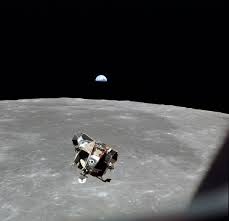Phased Project Planning (PPP)
James Edwin Webb and NASA 1965-1969
NASA had a history of phasing projects when Phased Project Planning was introduced, so this project planning methodology can be viewed as a codifying and hardening as well as introducing uniformity into pre-existing practice at NASA and elsewhere. One of the avowed objectives of PPP was to foster "maximum competition" because in large projects they had had to rely on large, single-source contractors at great expense. If it had been followed strictly, PPP would have mandated full competition at every stage of development, which in practice was unrealistic because one firm was generally the obvious candidate for follow-on development work.

PPP mandated that there would be a NASA operating plan which was "the official consolidated statement of NASA resource use plans for the current year." Each item in the plan would have a "PAD" - a document which would set the objectives, and would specify funding and work authorizations. "Together, the operating plan and the PAD system provide a double entry type of approval, control and audit system within which both program and administrative objectives [could] be achieved." In submitting a PAD, programme directors had to: "first, to approve and endorse its substantive and technical merit; second, to take into account all related administrative and functional requirements; and third, to reflect these considerations in the documentation he sends forward through the Associate Administrator for Organization and Management."
PPP was implemented at the instigation of James Edwin Webb (1906-1992), NASA's second administrator, who was responsible for all of the manned launches in the Mercury and Gemini programs, as well as the Apollo program up to the first manned flight. Webb wanted to "cut out the concurrence mill", which sometimes took up to a year, with 25 or 30 concurrences required to prove something. Under PPP, one signature would be enough. He also wanted visibility so that "no one could bury a problem and keep it buried."
Today PPP is often seen as a very traditional approach, and is used as a point of contrast for newer methodologies. However, it should not be forgotten that this was the project managment approach that led to what is arguably mankind's greatest explorational achievement, the 1969 manned moon landing.
